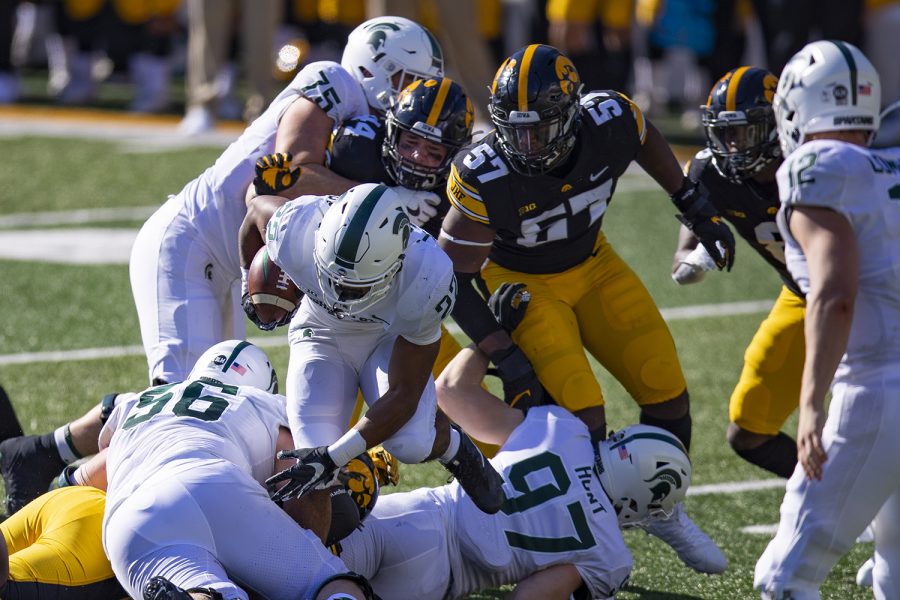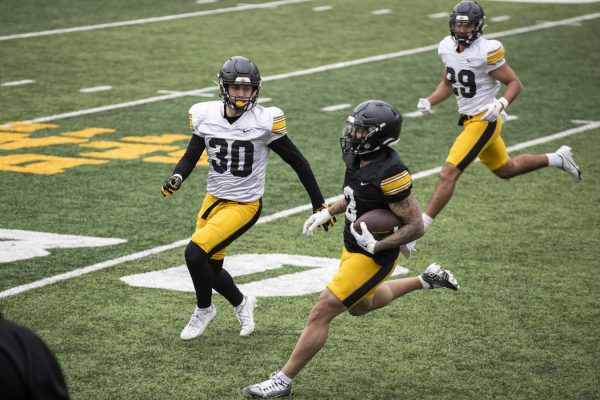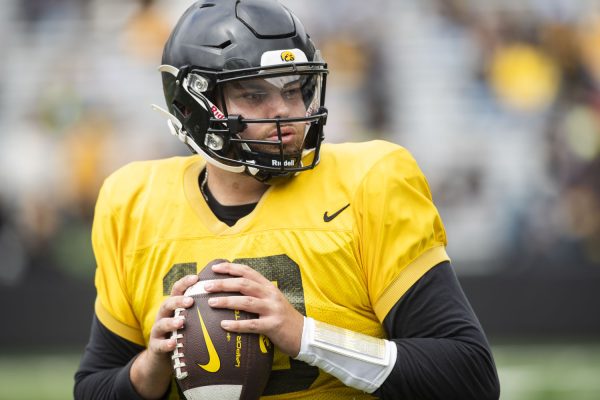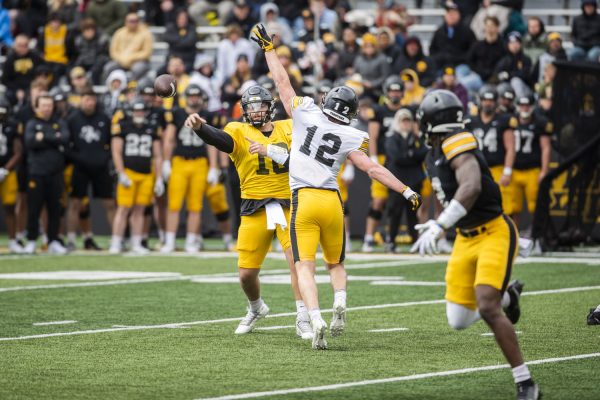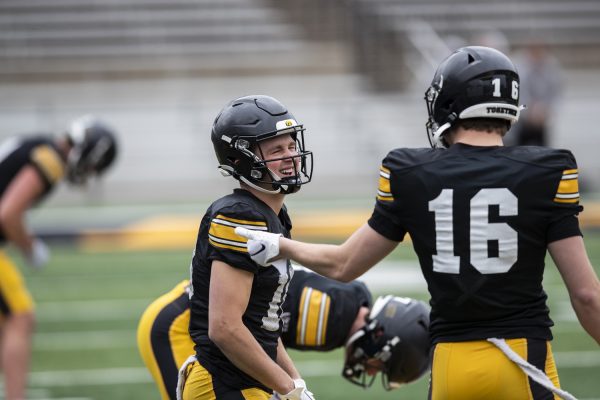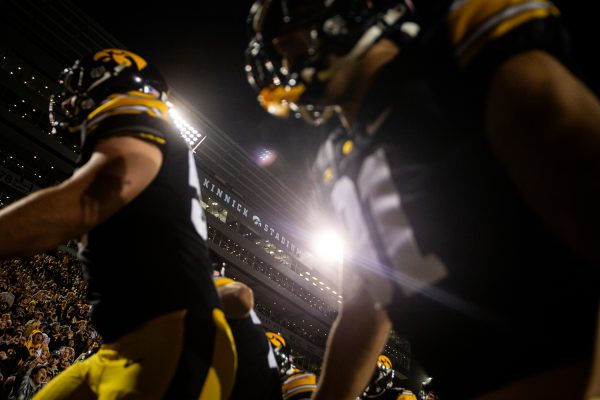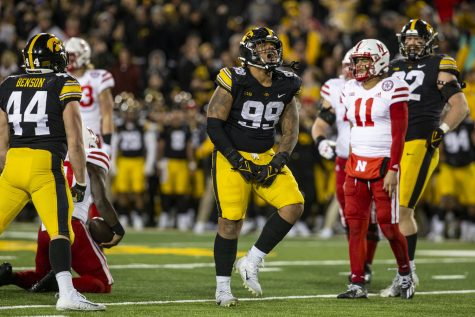Iowa defensive line helped turned tide against Illinois
Getting pressure on Illinois’ quarterback and slowing down the run game made a huge difference for the Hawkeyes.
Iowa defensive end Chauncey Golston pursues the running back during a football game between Iowa and Michigan State on November 7, 2020.
December 6, 2020
The Iowa front four has tackled runners in the backfield and sacked quarterbacks frequently this season. But the Hawkeye defense line struggled to make those momentum-swinging plays early on against Illinois.
In the first quarter and into the second, Illinois quarterback Brandon Peters had enough time to throw and make passes that just got by the Iowa secondary, including two touchdowns.
After trailing 14-0, the Hawkeyes scored their first touchdown on a 22-yard pass from quarterback Spencer Petras to tight end Sam LaPorta with over six minutes to go in the first half. That’s when the defensive line started to make a considerable impact in a game in which Iowa won, 35-21.
On the next drive, Peters was faced with 3rd and 18. Facing a four-man rush that got to him in a few seconds, he was forced to throw the ball on what ended up being an incomplete pass.
“Nothing changed,” Iowa defensive end Chauncey Golston said. “We just felt like we weren’t playing at our best. So, we just settled down and we just came out and played Iowa defense like we’re known for.”
Once the teams came out of the locker room at halftime, the Hawkeyes took the advantage from there. Down 14-13, they stopped the Fighting Illini on their first drive of the second half by slowing down their run game and forcing Peters to throw inaccurate passes.
Iowa took the lead on touchdown by receiver Ihmir Smith-Marsette on the next drive. Though the Fighting Illini avoided another three-and-out, Peters threw an incomplete pass on third-and-9 after facing a five-man rush. Unlike earlier in the game, Peters couldn’t get passes by the Iowa secondary, who seemed to be in better position and knew what was coming.
RELATED: Hawkeyes overcome early deficit, defeat Illini for fifth consecutive victory
After that play, Peters put his head on his helmet and wasn’t happy. He was pulled early after going 10-of-18 for 116 yards and two touchdowns.
“Just executing the game, that’s all it was,” said Golston regarding the defense containing Peters. “They did some things on their first two touchdowns. But after that, I don’t know, I really can’t answer that. The tape just speaks for itself.”
Holding the Illinois rushing attack to 149 yards was an accomplishment for the defense. Illinois was without one of its top running backs, Mike Epstein, but the Fighting were averaging over 220 yards on the ground per game before facing the Hawkeyes.
Though the Iowa defense didn’t produce any turnovers, it did get a sack. On a third down deep in his own territory, Peters dropped back and was soon rounded by three Iowa defenders. Two of them got credit for the sack — Golston and defensive tackle Daviyon Nixon.
Nixon has had a standout season with 5.5 sacks, 13 tackles for loss, and one interception, which was returned for a touchdown. in Iowa’s seven games. For the player who took a circuitous path to Iowa, it shouldn’t be surprising what he said about performing well game after game.
“Just my love and passion for the game,” Nixon said. “I don’t like losing, I hate losing, that’s like one of my biggest pet peeves. And when you have that drive and that love for the game to never lose, you can’t be stopped.”
The Iowa defense hasn’t allowed 30 or more points to an offense in 24 consecutive games. Head coach Kirk Ferentz said that always gives his team a chance to win games and that molding a good defensive team was one of the building blocks when he started being the head coach in 1999.
He’s had two defensive coordinators in that span, with Norm Parker coaching from 1999-2011 and Phil Parker coaching from 2012 to present day.
Ferentz said that against Illinois, the defensive coaches did make good adjustments. But the coaches couldn’t do it alone.
“The players really responded,” Ferentz said. “And ultimately it’s about the players making plays out there on the field.”



